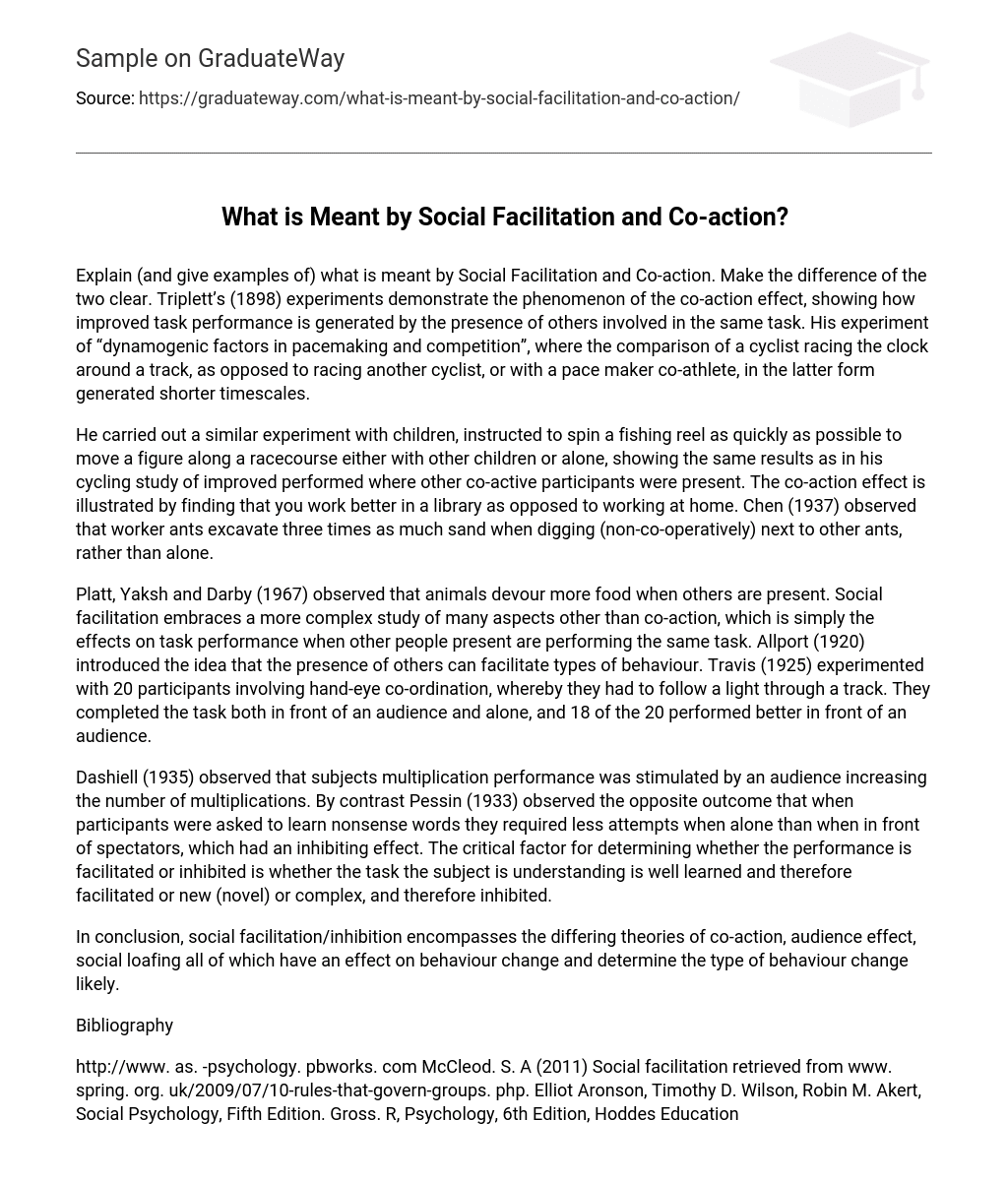Explain (and give examples of) what is meant by Social Facilitation and Co-action. Make the difference of the two clear. Triplett’s (1898) experiments demonstrate the phenomenon of the co-action effect, showing how improved task performance is generated by the presence of others involved in the same task. His experiment of “dynamogenic factors in pacemaking and competition”, where the comparison of a cyclist racing the clock around a track, as opposed to racing another cyclist, or with a pace maker co-athlete, in the latter form generated shorter timescales.
He carried out a similar experiment with children, instructed to spin a fishing reel as quickly as possible to move a figure along a racecourse either with other children or alone, showing the same results as in his cycling study of improved performed where other co-active participants were present. The co-action effect is illustrated by finding that you work better in a library as opposed to working at home. Chen (1937) observed that worker ants excavate three times as much sand when digging (non-co-operatively) next to other ants, rather than alone.
Platt, Yaksh and Darby (1967) observed that animals devour more food when others are present. Social facilitation embraces a more complex study of many aspects other than co-action, which is simply the effects on task performance when other people present are performing the same task. Allport (1920) introduced the idea that the presence of others can facilitate types of behaviour. Travis (1925) experimented with 20 participants involving hand-eye co-ordination, whereby they had to follow a light through a track. They completed the task both in front of an audience and alone, and 18 of the 20 performed better in front of an audience.
Dashiell (1935) observed that subjects multiplication performance was stimulated by an audience increasing the number of multiplications. By contrast Pessin (1933) observed the opposite outcome that when participants were asked to learn nonsense words they required less attempts when alone than when in front of spectators, which had an inhibiting effect. The critical factor for determining whether the performance is facilitated or inhibited is whether the task the subject is understanding is well learned and therefore facilitated or new (novel) or complex, and therefore inhibited.
In conclusion, social facilitation/inhibition encompasses the differing theories of co-action, audience effect, social loafing all of which have an effect on behaviour change and determine the type of behaviour change likely.
Bibliography
http://www. as. -psychology. pbworks. com McCleod. S. A (2011) Social facilitation retrieved from www. spring. org. uk/2009/07/10-rules-that-govern-groups. php. Elliot Aronson, Timothy D. Wilson, Robin M. Akert, Social Psychology, Fifth Edition. Gross. R, Psychology, 6th Edition, Hoddes Education





